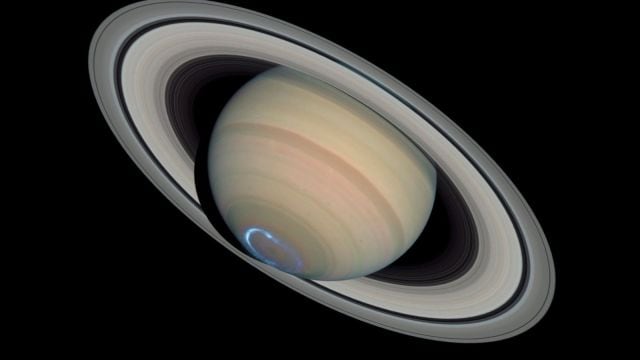Researchers to study Saturn, Uranus auroras with Webb Telescope
Researchers will use precious Webb telescope observing time to study auroras on Saturn and Uranus.
 Artistic illustration of auroras on Saturn. (NASA)
Artistic illustration of auroras on Saturn. (NASA)If you thought that the beautiful spectacle of auroras is unique to our planet, think again. Gas giants Uranus and Saturn in our solar system also have their own Northern Lights. The University of Reading on Wednesday announced that its researchers will use the James Webb Space Telescope to probe what causes these mysterious aurorae.
A team led by the University of Leicester has been awarded observation time using the Webb Telescope for two programmes that will focus on the aurorae of Saturn and Uranus. Their successful proposals were selected from among 1,931 submissions to the Webb Cycle 3 General Observer Program.
The aurorae on these planets, just like on Earth, are caused by high-energy charged particles which are funneled down and collide with the planets’ atmosphere through magnetic field lines.
“This is an extremely rare opportunity to use the most powerful and most complex telescope ever launched into space. We will be investigating Saturn’s own version of the northern lights, which seem to be caused by winds that flow in what looks like a figure-of-eight. We don’t know what is causing these winds, but we suspect hot spots in the upper atmosphere might be behind them. We will use the James Webb Space Telescope to map the temperatures across Saturn’s northern lights and figure out how weather is creating this spectacular light show,” said James O’Donoghue, a planetary scientist at the University of Reading, in a press statement.
The researchers’ project will capture images over the course of a single day on Uranus or one full rotation of the planet in 2025. This will let the researchers map auroral emissions across the whole of the planet. This will answer the question of whether the emissions are caused by the interaction with solar wind like on Earth or if there is an internal source like on Jupiter.







